Category: quantum physics – Page 583
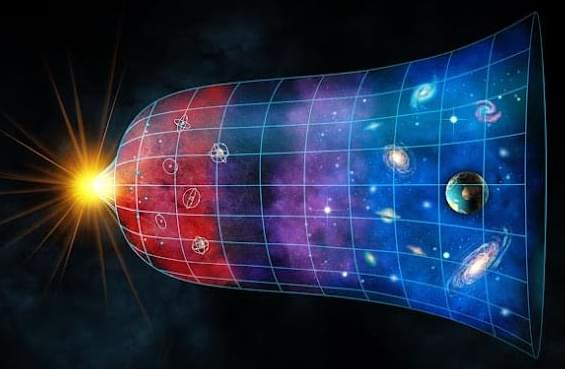
Unexpectedly, the cosmos didn’t start with the Big Bang anymore
In the beginning, there was … well, maybe there was no beginning. Perhaps our universe has always existed — and a new theory of quantum gravity reveals how that could work.
“Reality has so many things that most people would associate with sci-fi or even fantasy,” said Bruno Bento, a physicist who studies the nature of time at the University of Liverpool in the U.K.
In his work, he employed a new theory of quantum gravity, called causal set theory, in which space and time are broken down into discrete chunks of space-time. At some level, there’s a fundamental unit of space-time, according to this theory.
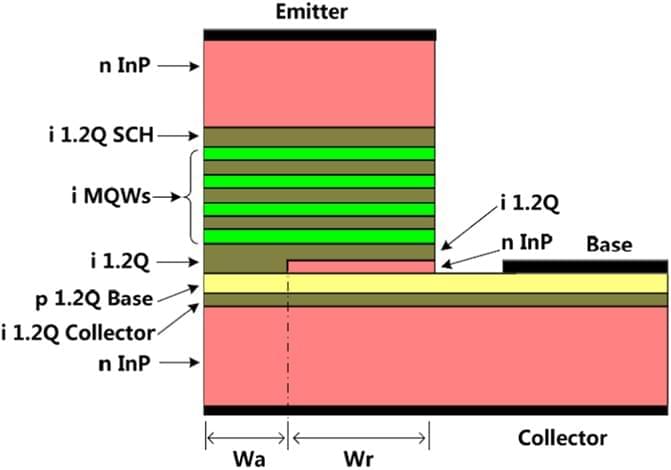
High current gain transistor laser
Circa 2016 face_with_colon_three
A transistor laser (TL)1,2,3, having the structure of a transistor with multi-quantum wells (MQWs) near its base region, bridges the functionality gap between lasers and transistors. From a TL, an electrical signal can be outputted simultaneously with a light signal by inputting one electrical signal, making it suitable for future high performance optoelectronic integrated device applications4. As a new kind of semiconductor laser or transistor, TLs have aroused many interests since its invention. For example, in 2006, the paper2 reporting the first room temperature operation of TLs was voted as one of the five most important papers published by Applied Physics Letters in over 40 years5. Because of the transistor structure, many interesting characters have been demonstrated, including resonance free frequency response, large direct modulation band width6, voltage controlled mode of operation7, low relative intensity noise (RIN) close to the shot-noise limit8 and low 3rd order intermodulation distortion (IMD)9.
However, light emission for all the TLs reported up to now is produced at the expense of current gain. Taking npn TLs as an example, in the devices, electrons injected from the emitter into the base layer first recombine with holes radiatively before the left being collected by the collector4. The majority of the electrons are consumed by stimulated light emissions, leading to a current gain which is a lot lower than the gain of a traditional transistor. The common emitter (CE) mode current gain (collector current/base current) is lower than 5 for most, if not all, of the TLs studied, either experimentally1,2,3,6,7,8,9,10 or numerically11,12,13. The low current gain may limit the performance of systems that use TLs. For example, it is much easier to integrate monolithically a heterojunction bipolar transistor (HBT) and a TL than to integrate an HBT with a laser diode (LD) because of the dual functionality of TLs. For such applications, a large current gain of TL (used as HBT) is desired for the amplification of electrical signal to drive the laser.
In this work, we propose a novel TL structure which has an n-doped InP layer inserted in the emitter ridge, forming a flow aperture in the center of the emitter ridge for only holes. Here after, the TLs having the hole current aperture is designated as a-TLs. The properties of the a-TLs are systematically studied numerically. It is shown that while the light emission power of a-TLs is comparable with that of TLs without the aperture at the same base current, the CE current gain of a-TLs can be over 15 times larger.

Don’t Let Yourself Get Tangled Up
Quantum mechanics, the theory which rules the microworld of atoms and particles, certainly has the X factor.
Unlike many other areas of physics, it is bizarre and counter-intuitive, which makes it dazzling and intriguing.
When the 2022 Nobel prize in physics was awarded to Alain Aspect, John Clauser, and Anton Zeilinger for research shedding light on quantum mechanics, it sparked excitement and discussion.
Quantum computers’ secret power: How they could dramatically boost energy efficiency
Could energy efficiency be quantum computers’ greatest strength yet?
Bartlomiej Wroblewski/iStock.
However, the question of its energy consumption could also now warrant research, with current supercomputers sometimes consuming as much electricity as a small town (which could in fact limit the increase in their computing power). Information technologies, at their end, accounted for 11% of global electricity consumption in 2020.

‘Spooky action at a distance’ can lead to a multiverse. Here’s how
Some interpretations of quantum mechanics propose that our entire universe is described by a single universal wave function that constantly splits and multiplies, producing a new reality for every possible quantum interaction. That’s quite a bold statement. So how do we get there?
One of the earliest realizations in the history of quantum mechanics is that matter has a wave-like property. The first to propose this was French physicist Louis de Broglie, who argued that every subatomic particle has a wave associated with it, just like light can behave like both a particle and a wave.
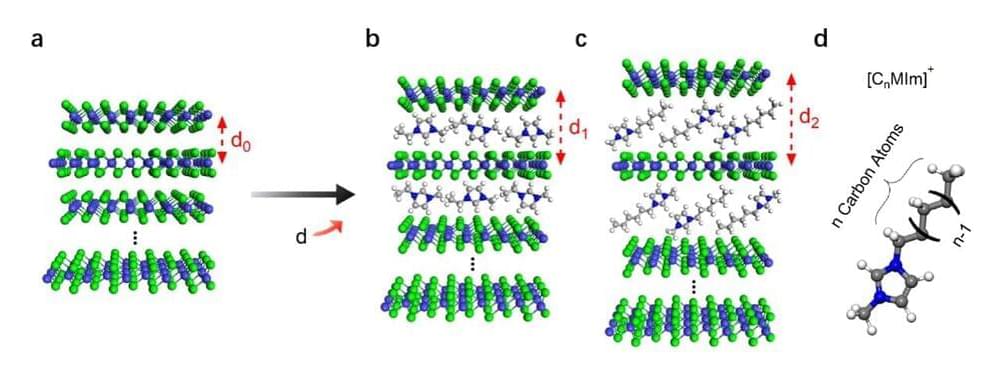
Study demonstrates tailored Ising superconductivity in intercalated bulk niobium diselenide
When 2D layered materials are made thinner (i.e., at the atomic scale), their properties can dramatically change, sometimes resulting in the emergence of entirely new features and in the loss of others. While new or emerging properties can be very advantageous for the development of new technologies, retaining some of the material’s original properties is often equally important.
Researchers at Tsinghua University, the Chinese Academy of Sciences and the Frontier Science Center for Quantum Information have recently been able to realize tailored Ising superconductivity in a sample of intercalated bulk niobium diselenide (NbSe2), a characteristic of bulk NbSe2 that is typically compromised in atomically thin layers. The methods they used, outlined in a paper published in Nature Physics, could pave the way towards the fabrication of 2D thin-layered superconducting materials.
“Atomically thin 2D materials exhibit interesting properties that are often distinct from their bulk materials, which consist of hundreds and thousands of layers,” Shuyun Zhou, one of the researchers who carried out the study, told Phys.org. “However, atomically thin films/flakes are difficult to fabricate, and the emerging new properties are sometimes achieved by sacrificing some other important properties.”
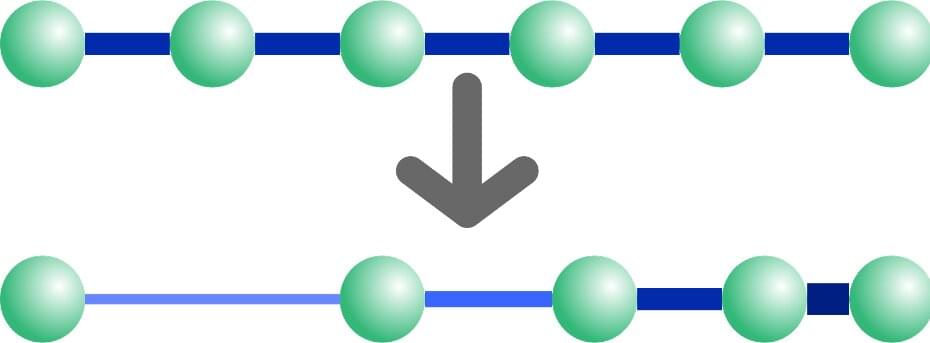
Synthetic black holes radiate like real ones
Research led by the University of Amsterdam has demonstrated that elusive radiation coming from black holes can be studied by mimicking it in the lab.
Black holes are the most extreme objects in the universe, packing so much mass into so little space that nothing—not even light—can escape their gravitational pull once it gets close enough.
Understanding black holes is key to unraveling the most fundamental laws governing the cosmos, because they represent the limits of two of the best-tested theories of physics: the theory of general relativity, which describes gravity as resulting from the (large-scale) warping of spacetime by massive objects, and the theory of quantum mechanics, which describes physics at the smallest length scales. To fully describe black holes, we would need to stitch these two theories together and form a theory of quantum gravity.

Experiments Deliver Superposition Of Photon Going Forward And Backward In Time
Two different groups have tested a seemingly counter-intuitive property of the quantum world: That it’s possible to put a photon, a particle of light, in a superposition of states going forward and backward in time. This is not time travel and won’t lead to communicating with the past – but it is an intriguing demonstration of how time can be thought to work at a quantum level.
Unless you have a TARDIS or a DeLorean, time only flows in one direction (forward) for us. This annoying little fact that protects us from all sorts of paradoxes is called the arrow of time. It is believed to be related to the concept of entropy (which always increases in an isolated system like the universe) but it doesn’t seem to be as fundamental at the quantum level.
Instead, something that appears to be fundamental is the so-called CPT symmetry (charge, parity, and time reversal symmetry). This holds for all physical phenomena, and if a combination of two of them is violated (such as famously the CP violations) there ought to be a violation in time symmetry as well.
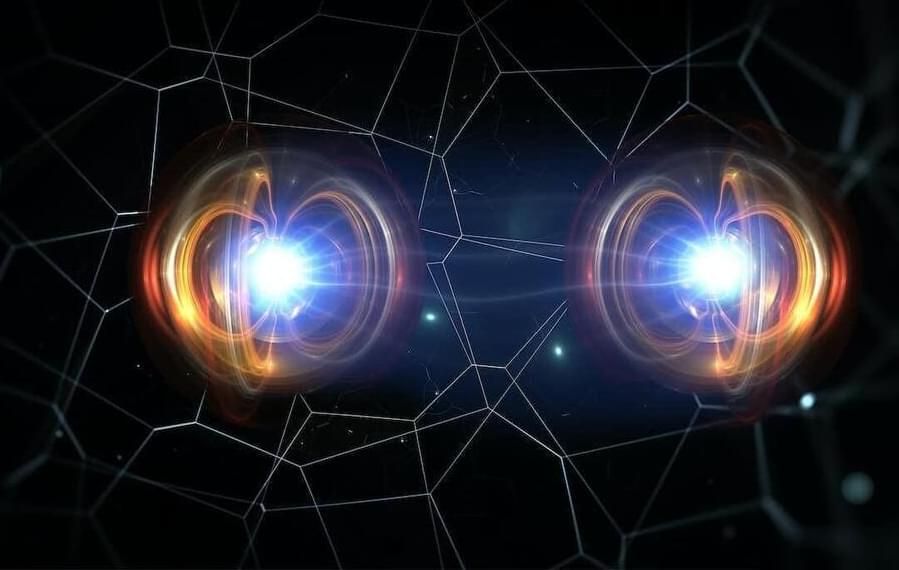
Four common misconceptions about quantum physics
Quantum mechanics, the theory which rules the microworld of atoms and particles, certainly has the X factor. Unlike many other areas of physics, it is bizarre and counter-intuitive, which makes it dazzling and intriguing. When the 2022 Nobel prize in physics was awarded to Alain Aspect, John Clauser and Anton Zeilinger for research shedding light on quantum mechanics, it sparked excitement and discussion.
But debates about quantum mechanics —be they on chat forums, in the media or in science fiction—can often get muddled thanks to a number of persistent myths and misconceptions. Here are four.